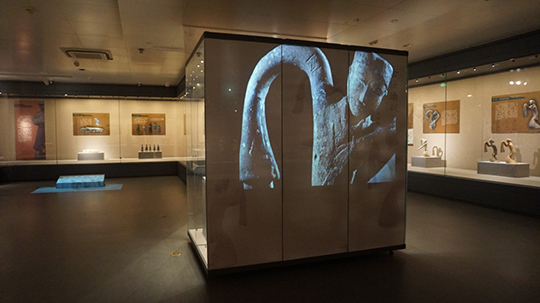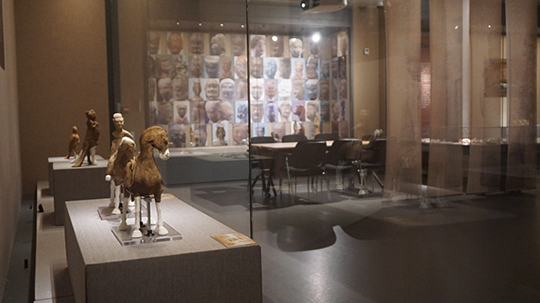

Xuzhou Han Culture Academic
Submit
【XU BO】Maximum daily capacity: 10,000 person-times Instantaneous capacity: 2,500 person-times
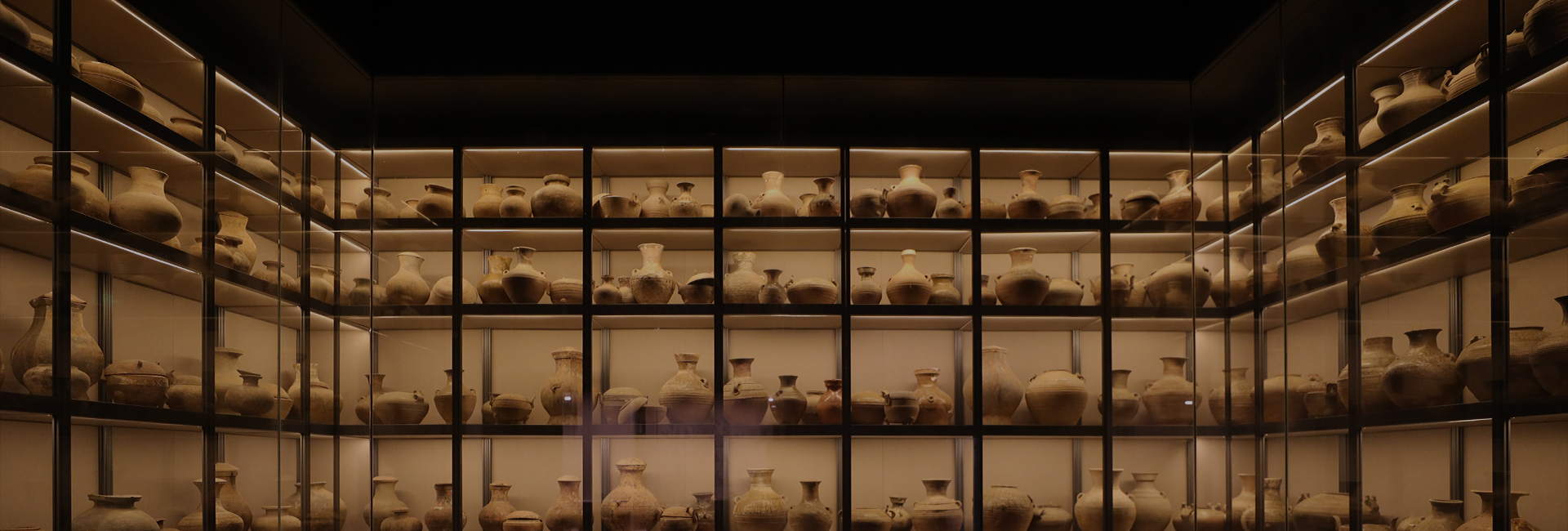
◇ Exhibition time:May 16, 2018 to June 10, 2018
◇ Exhibition venue:Deng Yongqing calligraphy and painting Museum, the first floor of Xuzhou Museum
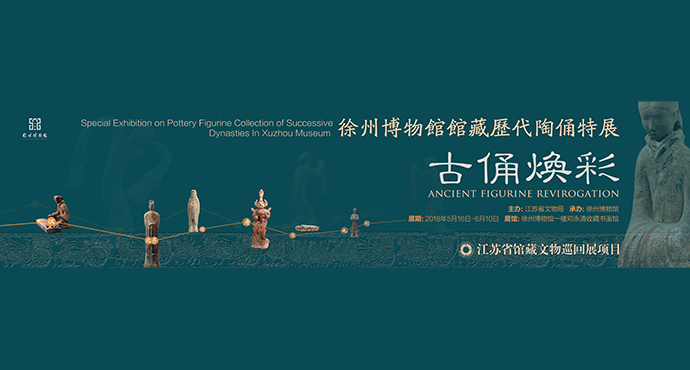
2018 "518 International Museum Day" main venue activity of
Jiangsu

Jiangsu Province collection cultural relics tour exhibition project
Ancient terracotta figures glow with color
Sponsored by: Jiangsu Provincial Bureau of cultural relics
Organized by: Xuzhou Museum
Exhibition time:
May 16 to June 10, 2018
Exhibition hall: Deng Yongqing collection of painting and calligraphy on the first floor of Xuzhou Museum
Exhibition director: Li Xiaojun
Exhibition coordinator: Yuan Feng
Exhibition director: Yue Kai, Zong Shizhen
Content design: Tian Erwei, Wu Geng, LV Jian
Exhibition design: Yu Ming, Hao Lirong, Yu Daomei
Cultural relics protection: Zhang Ya, Li Zongmin
Social education: Du Yihua, Dong Xinhui, Hou Lulu, Ji hangxue
Media publicity: Miao Hua, Xie Yanwen
Cultural innovation: Zhao Yong, Chen Dong
Preface
Pottery figurines refer to various figures of human and animal figurines made of clay, which are important contents of ancient Chinese sacrificial objects. Known as "the eighth wonder of the world", the terracotta warriors of the first emperor of Qin, the "naked" Terracotta Warriors of the Yangling Mausoleum of the emperor Jingdi of Han Dynasty, and the magnificent ti-colored Terracotta Warriors of Tang Dynasty have become the eternal memory of the times, shining in the long history.
Xuzhou, known as Pengcheng in ancient times, is known as the "thoroughfare of five provinces". Huaihai in the East, Zhongyuan in the west, Jianghuai in the south, Qilu in the north. The war is a fortress to resist the invasion of the northern barbarians, and it is the key to the integration of the north and the south. With special geographical location and regional political center, the ancestors left rich cultural relics and unique cultural relics in Xuzhou.
This exhibition shows the essence of some cultural relics selected from the pottery figurine of the past dynasties. We are willing to enjoy the vicissitudes of history and the charm of cultural relics together with the audience.
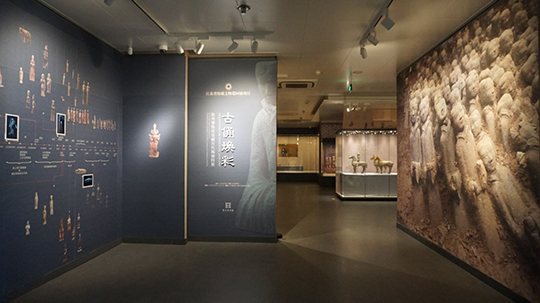
As one of the important exhibition projects of cultural relics tour exhibition in Jiangsu Province, the exhibition of ancient terracotta figures in Xuzhou Museum has been widely praised since it was launched. Pottery figurines, especially Han figurines, are one of the important features of cultural relics in Xuzhou Museum. Many tourists know that there is a special exhibition hall of pottery figurines in the basic display on the third floor of the museum. What's the content of the exhibition? What are the highlights of the exhibition? This is also the main problem to be considered and solved by the exhibition planning team. Wait for editor to come with you.
First of all, let's have a look at the exhibition of ancient terracotta figures in Xuzhou Museum. The exhibition is divided into four parts. More than 190 pieces (groups) of excellent terracotta figures are selected. Starting from the characteristics of the times of the terracotta figures in different periods of Xuzhou, such as the Han Dynasty, the southern and Northern Dynasties, the Sui and Tang Dynasties, the song, yuan, Ming and Qing Dynasties, we can see the political, economic, military and cultural features of each period, from which we can see the music and dance of the imperial life, folk customs, funeral etiquette, production technology.
Part I: pottery figurines in the Han Dynasty
The Han Dynasty is the most popular and the largest number of pottery figurines buried with others in ancient China. Compared with the Qin Dynasty, the proportion of pottery figurines in the Han Dynasty has shrunk, about one third of the real people, which is more realistic and life-oriented. Xuzhou was an important vassal state in the Han Dynasty, the Western Chu state and the eastern Pengcheng state. More than 3000 tombs were found. Pottery figurines are one of the most popular funerary objects. They are mainly found in the tombs of the king of Chu, the patriarchal clan of Liu and the powerful officials in the Western Han Dynasty. According to the preliminary statistics, the number of pottery figurines unearthed is more than 6000, which is the area with the largest number of pottery figurines in the Western Han Dynasty except the capital Chang'an.
A large number of terracotta figures unearthed in Xuzhou Han tombs are not only numerous and various, but also of distinctive regional style. Among them, there are the Lion Mountain terracotta warriors with huge array, simple shape, and freehand style; the elegant and graceful Tuolan Mountain dance terracotta; the Beidong Mountain terracotta warriors with kneeling, modesty and delicacy; more interesting and lifelike animal terracotta warriors of all kinds.

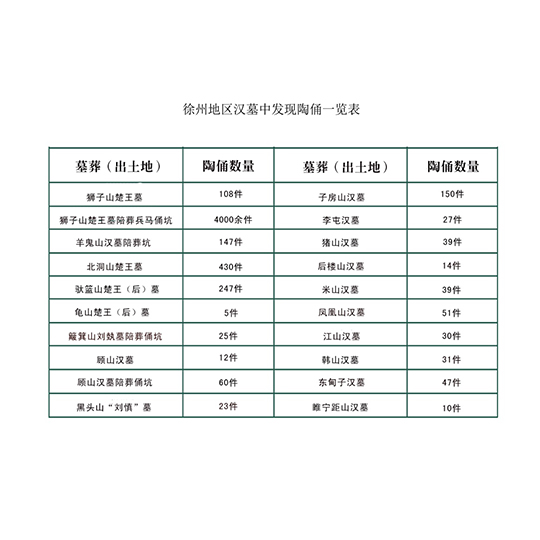
Exhibition
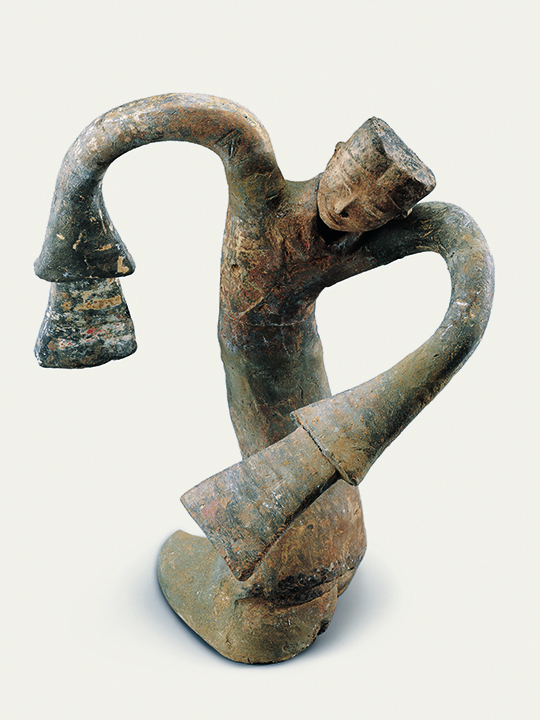
Terracotta figures dancing around the lapel
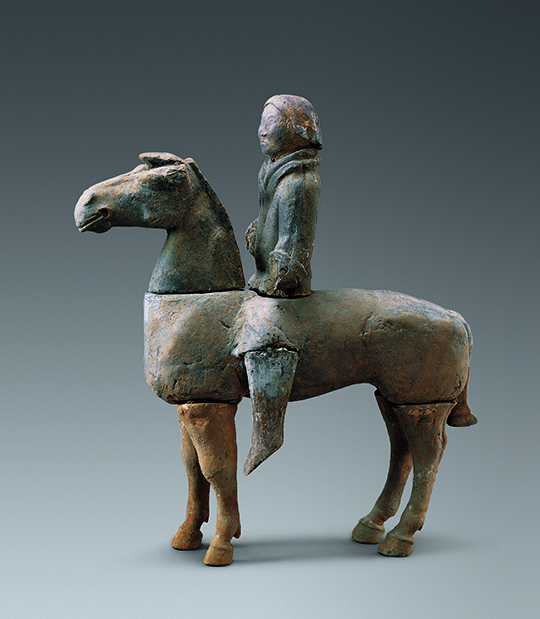
Pottery Figurines on Horseback
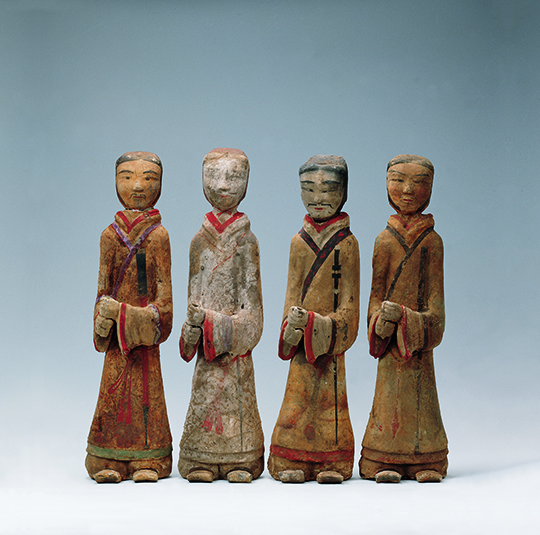
Painted terracotta soldiers
Part II: pottery figurines in the northern and Southern Dynasties
During the Three Kingdoms and the two Jin Dynasties, there were few terracotta figures buried with people, and the production was simple, the figure was dull, and the art level was not high. In the northern and Southern Dynasties, on the one hand, there was a confrontation between the north and the South; on the other hand, there was a mixture of ethnic groups, exchange and integration, and the burial of terracotta figures also reflected the characteristics of this era. In the Southern Dynasty, the costumes and hair styles of the terracotta warriors varied. The head crown was higher and higher, the lapel was larger and larger, and some of the sleeves were almost full. The terracotta warriors in the Northern Dynasty absorbed the characteristics of foreign culture and the culture and art of various ethnic groups, with various forms, especially the depiction of the characters' expressions, reflecting a high artistic level.
Xuzhou is located in the center of the cultural blend between the north and the south. The terracotta figures of cultural officials unearthed from the tomb of Northern Qi in Lion Mountain are as elegant as a plain one, and the terracotta figures of female attendants are elegant and beautiful; the terracotta figures of warriors of bright light and armor Hu people unearthed from the tomb of Northern Qi in Dongdianzi are incomparable; the female terracotta figures unearthed from the tomb of Northern Dynasties in Lingjiaba with distinctive regional characteristics of blending north and south, which are all outstanding representatives of the terracotta figures unearthed in Xuzhou during this period.
terracotta figures of warriors with armor

terracotta figures of warriors with armor
Part three: pottery figurines in Sui and Tang Dynasties
Sui and Tang Dynasties is another peak in the development history of Chinese ancient pottery figurine sculpture art. The open social atmosphere and rich and colorful life inspired the creativity of craftsmen. The pottery figurine has various themes and rich images. Honor, travel, hunting, dressing up, serving, singing and dancing, traveling, merchants, labor, breeding, etc. are all reflected. Civil officers and generals, servants and merchants, Han ethnic groups, musicians and dancers are all vivid images. Horses, camels, donkeys, cattle, dogs, lions, eagles, leopards and other animals are also lifelike. No matter from the quantity and quality, creative themes and creative techniques, it has made great progress compared with the Qin and Han Dynasties.
In the Tang Dynasty, Xuzhou successively set up Xu Sihao, Wu Ning army and an officer of the probation army. The boat shaped brick chamber tomb is popular in the tombs. A large number of terracotta figurines have been found in the Tang tombs of Huahuama village in the north of Xuzhou, including tricolor town tomb beast, heavenly kings figurines, literary officials and terracotta warriors, horse Figurine and camel figurine.
Exhibition
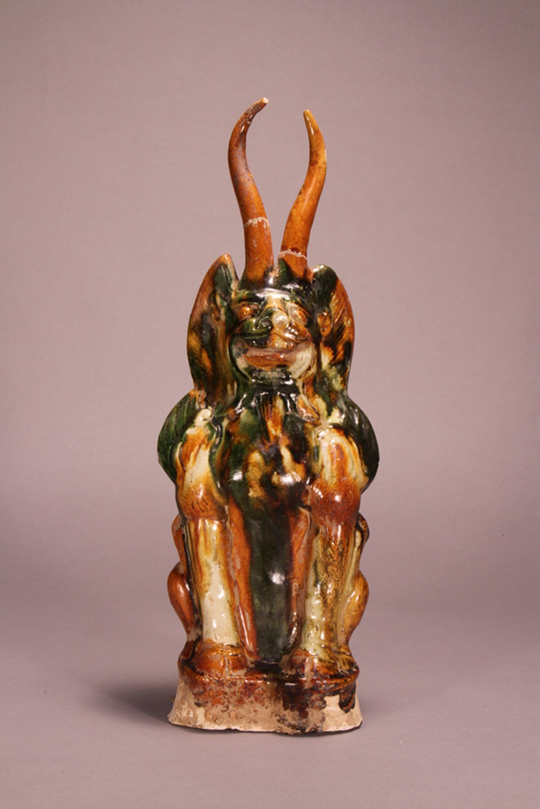
tricolor town tomb beast

Painted terracotta figures
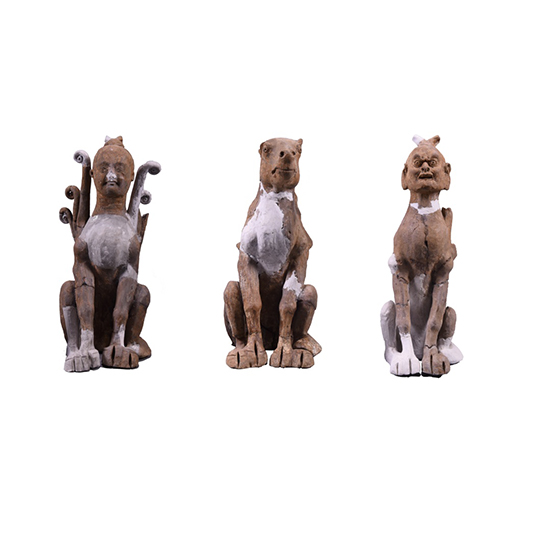
Tomb-guarding Beasts
Xuzhou was established in song and Yuan Dynasties, belonging to the government of De, but its subordination changed frequently. In the Yuan Dynasty, Wuanzhou was established and Pengcheng county was merged into the state. In the early Ming Dynasty, Xuzhou once belonged to Fengyang, and then to nanzhili. During this period, there were few terracotta figures found in Xuzhou area. Except for the white porcelain lying figurines found in the tombs of the Song Dynasty in Lion Mountain, most of them were collected in the museum.
Exhibition
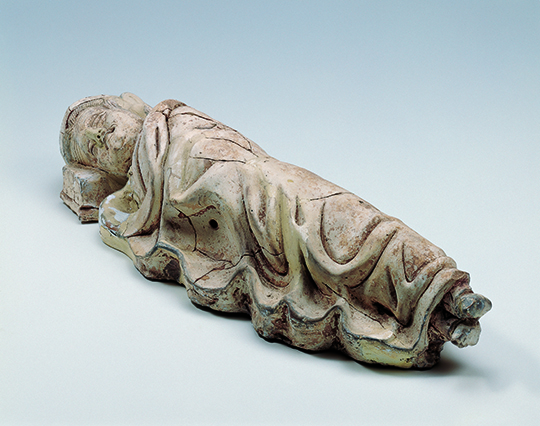
Porcelain figurinesThere are few pottery figurines unearthed in Yuan Dynasty. On the one hand, paper artifacts were very popular at that time, and gradually replaced the pottery figurines; on the other hand, the Mongolian people were popular with thin burial and deep burial, and did not build sealing soil. Most of the pottery figurines in the Yuan Dynasty are black pottery, which is hard and delicate. Among them, the polished black pottery figurines are transparent in the black, just like the gold and stone, which are inferior to the previous dynasties. In addition, the terracotta figures of the Yuan Dynasty were not painted, but represented the figures entirely by the language of sculpture. They had exquisite facial features, rough clothing and knife techniques. They could be described as the combination of hardness and softness, the degree of relaxation, and their artistic level was no less than that of the Han and Tang Dynasties.
the lying pottery figurines
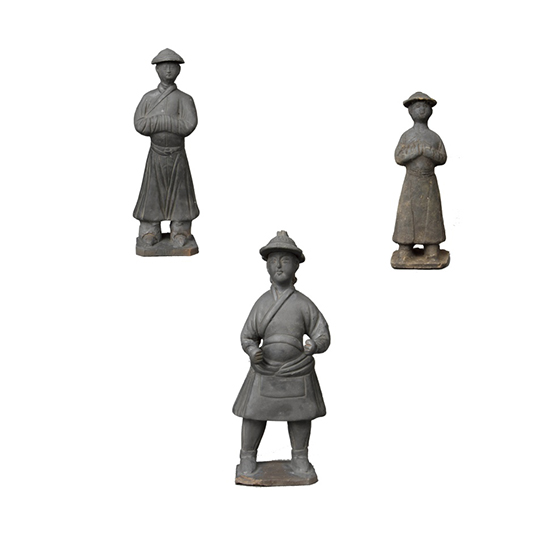
There are few pottery figurines unearthed in Yuan Dynasty. On the one hand, paper artifacts were very popular at that time, and gradually replaced the pottery figurines; on the other hand, the Mongolian people were popular with thin burial and deep burial, and did not build sealing soil. Most of the pottery figurines in the Yuan Dynasty are black pottery, which is hard and delicate. Among them, the polished black pottery figurines are transparent in the black, just like the gold and stone, which are inferior to the previous dynasties. In addition, the terracotta figures of the Yuan Dynasty were not painted, but represented the figures entirely by the language of sculpture. They had exquisite facial features, rough clothing and knife techniques. They could be described as the combination of hardness and softness, the degree of relaxation, and their artistic level was no less than that of the Han and Tang Dynasties.

Among the Ming Dynasty's artifacts, the colored glazed pottery figurines are the main burial objects, and their contents mostly show the prominent position of the dead before death, which is a remarkable feature of the Ming Dynasty's pottery figurines. For example, the terracotta figures unearthed from the Liao tomb in Fucheng, Hebei Province, represent the spectacular scene of the tomb owner's travel before his life.
Now is the time to make a point.
1.The exhibition gathered the collection of pottery figurines, the historical, artistic and scientific values of the ancient pottery figurines have been fully restored and displayed, focusing on the characteristics of the Han Dynasty and the Sui and Tang Dynasties in Xuzhou.
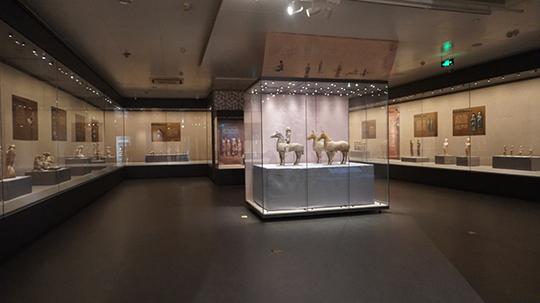
2、 The exhibition makes full use of the latest archaeological excavation and research results, and many terracotta figures are presented to the audience for the first time, especially the colored female terracotta figures, the cultural official terracotta figures, the armor terracotta figures, all kinds of tomb animals.
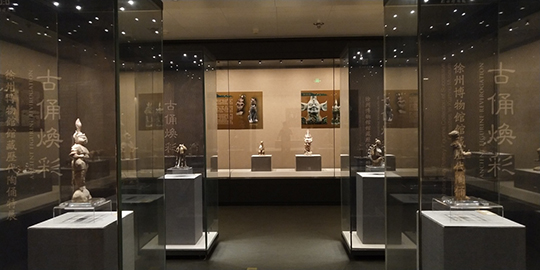
3、 In addition to the traditional display boards, instruction boards and cultural relics, multimedia means are used to show the characteristics of high-quality cultural relics in 360 degrees. The interactive areas are fully used to select the highlights of different times for explanation and copying, and the political, life and era characteristics reflected behind the cultural relics are explored.
